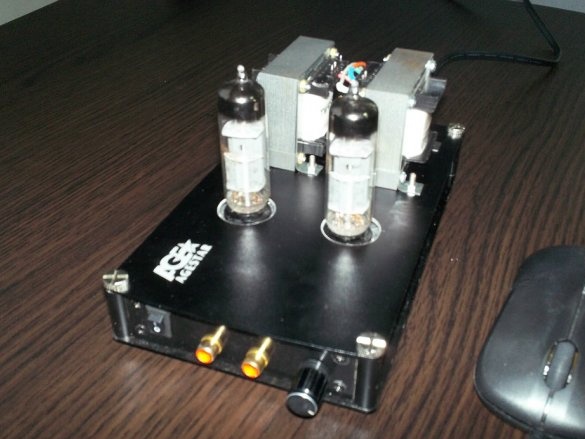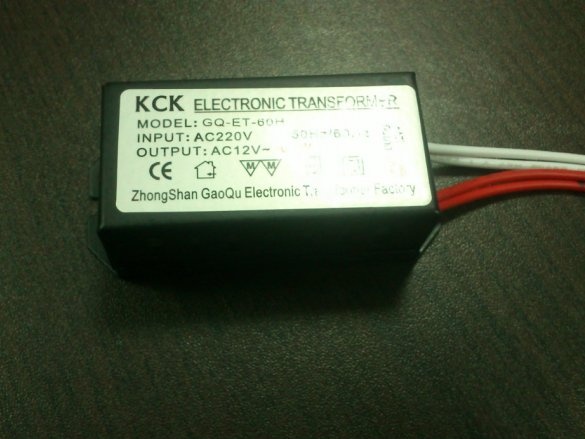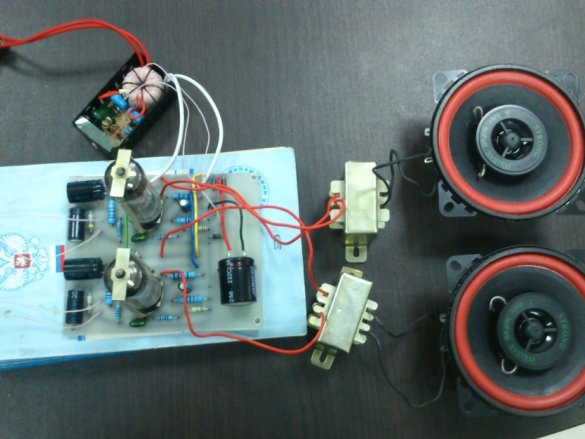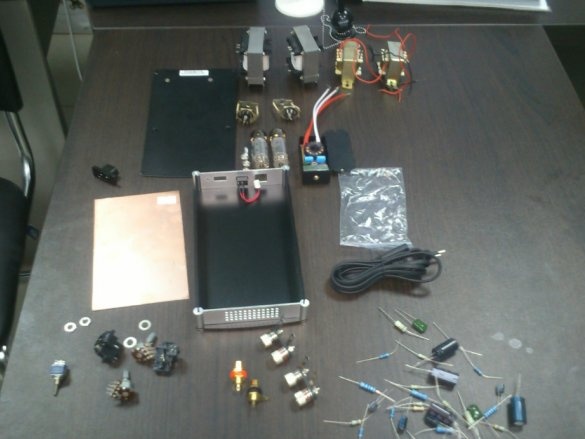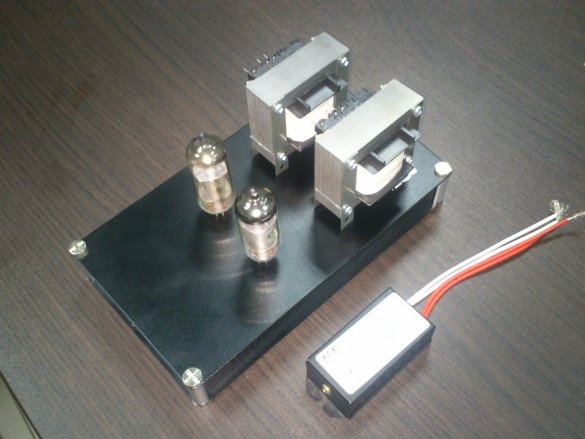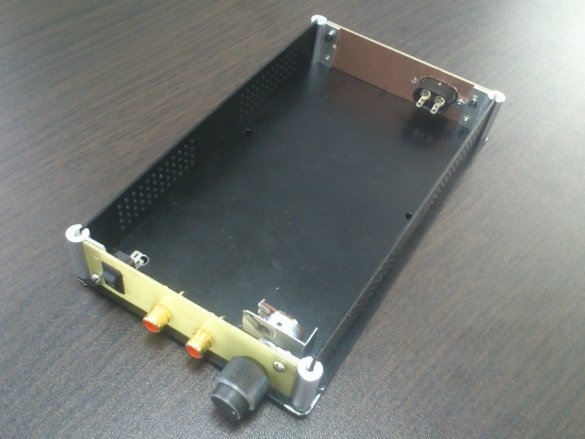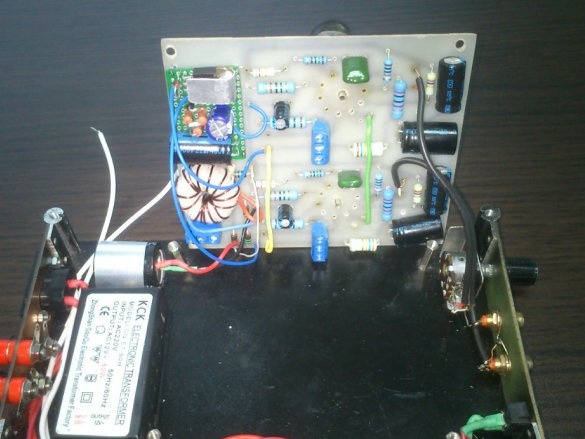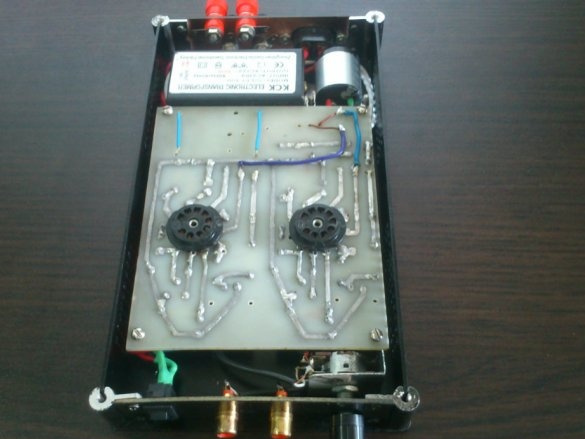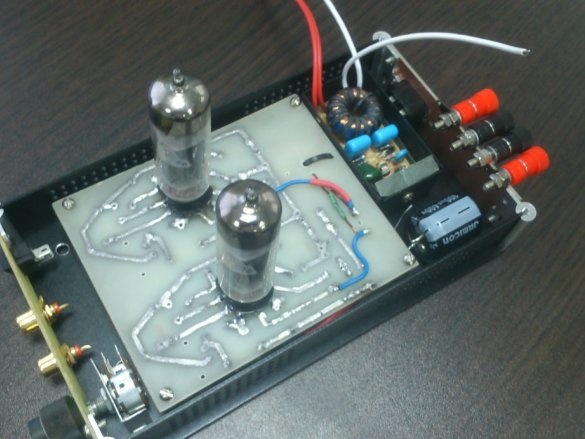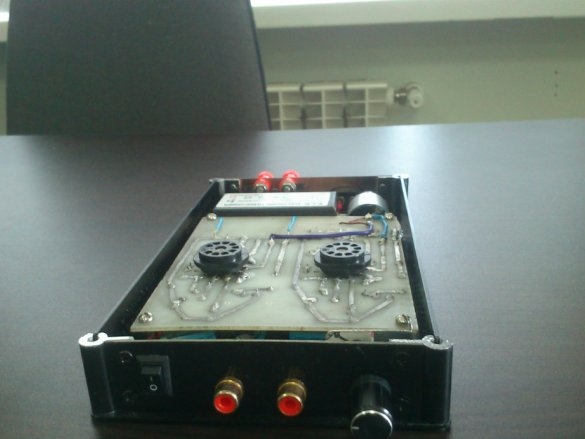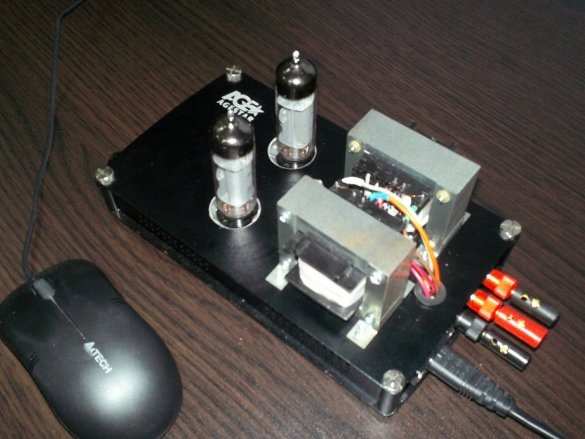The single-cycle amplifier is made using a 6F5P lamp, it is very convenient, since this lamp contains actually two lamps, one for the preliminary stage and the other for the terminal one. The lamp has good characteristics and you can assemble an amplifier with a power of about 5 watts on it. (translated into Chinese watts, this is somewhere around 12-20 watts). As a power source, the so-called "electronic transformer ”, which is used to power 12 volt halogen lamps for interior lighting. Suitable transformers are used as output transformers; purchased on istok2.com there you can choose from several options, more expensive and better, and cheaper with average characteristics. Radio tubes and lamp panels were also purchased there. The remaining parts are purchased in radio parts stores, they are widespread. The case was decided to use from the case of an external HDD.
The following scheme was chosen for the project, only the printed circuit board was developed differently, immediately on 2 channels:
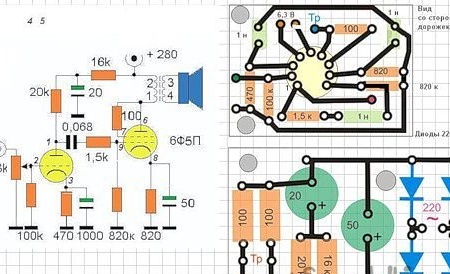
The printed circuit board was developed using the program Sprint-Layout-6-0 freely distributed.
The circuit itself is a classic, it has no features, it has been used unchanged since the 50s of the last century, but the power supply for it has a number of features, since, as mentioned above, a pulsed source is used. Firstly, the output of the electronic transform has the following parameters: Alternating current 12 Volts, 5 Amps (for a 60-watt transformer), which is more than enough for this amplifier. And secondly, the voltage frequency from 50 to 100 kHz (for different models). The easiest way is to use those models that have an output transformer on the ring, although almost anyone can use it. It is more convenient to use on the ring, the secondary winding on it is wound first, and the secondary over. The high frequency of the output voltage causes measurement difficulties and requires the use of high-frequency diodes in the rectifier. (and they are 1-2 rubles more expensive than usual).Yes, an important addition, the transformer without load does not start at all, which is very useful in our project.
The following electronic transformer was used:
Food is organized as follows. Since the filament is designed for 6.3 volts and the transformer produces 12 volts, it was decided to connect the two filament parts of the lamps in series, the high voltage frequency for supplying the filament for the lamps does not matter. Power is supplied directly from the electronic transformer. For the anode power of the 6F5P lamp, a voltage of 220 - 300 volts is required. To obtain this voltage, a non-standard method was used. Background: during the experiments with one of the electronic transformers, it “exploded”, but the output transformer remained intact. It was finalized, the old secondary winding was removed, the primary winding was winded up with a thin MGTF wire using a shuttle to fill. And the former secondary winding with the same number of turns as before was wound with a PEL-0.8 wire over the primary one. The former secondary winding became primary and is connected to the output of an electronic transformer. At the output, a voltage of 250 volts of alternating current was obtained. After installation, it was decided to test the concept in general, and in order not to bear the risk, use cheap Chinese transformers for radio points as output transformers. Here is the first stand:
The electronic transformer device is clearly visible. During listening, the background of the alternating current was detected, the oscilloscope set its frequency to 100 Hz, i.e. the doubled frequency of the alternating current network. After researching the Internet, a circuit of the so-called “electronic choke” was found, it was made on an additional breadboard and installed after the rectifier. After installing it, the background disappeared. In general, the amplifier was not heard turned on or not turned on even at maximum volume. The electronic choke circuit is very simple:
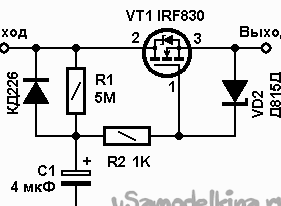
The installed circuit board can be seen in the upper left corner of the circuit board (green, the transistor is mounted on a makeshift radiator). After listening and eliminating the background, the output transformers were replaced and installed in the final version. The result did not disappoint.
And now the manufacturing steps: collecting parts:
Preliminary prototyping:
Prototyping showed that the project can be implemented and has the right to life.
Beginning of the manufacture of the case:
Mounting:
And the final version:
The amplifier is used in conjunction with the 20 Watt RFT brand GDR speakers, fully shakes them and has bright bass and a balanced frequency range.

